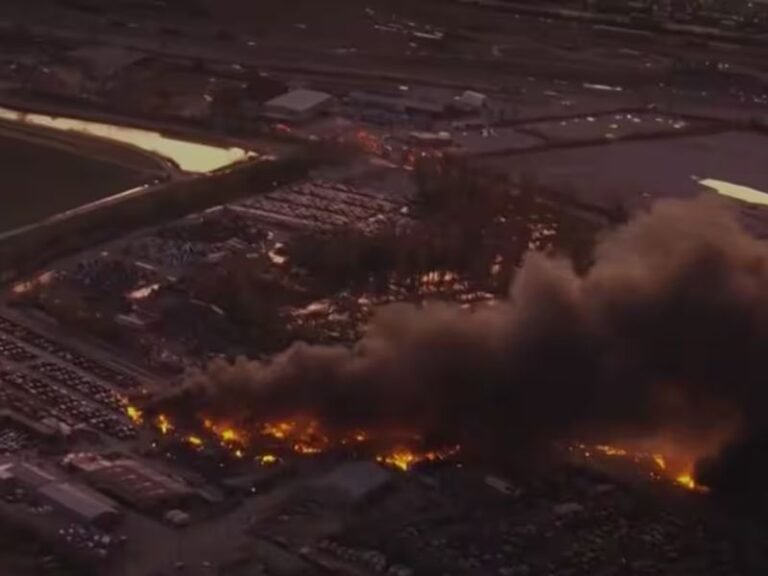Fire Departments Move Away From ‘Forever Chemicals’ in Gear Amid Cancer Concerns
EAST PROVIDENCE, R.I. — Firefighters across the country are beginning to swap out their protective gear for alternatives free of PFAS, or “forever chemicals,” amid growing concerns that the toxic compounds may be increasing their risk of cancer.
The East Providence Fire Department in Rhode Island recently became the first in the nation to issue all of its 125 firefighters new PFAS-free gear. For Lt. Thomas Votta, who has battled fires for more than a decade, the change brought relief.
“Having it inside our gear, touching or very close to our skin was very, very concerning,” Votta said. “Knowing that’s gone now, it gives us a little bit of relief. We’re not getting it from every angle.”
Why PFAS-Free Gear Matters
PFAS, or perfluoroalkyl and polyfluoroalkyl substances, are used in many fire coats and pants to repel water, oil, and contaminants. But these chemicals persist in the environment and the body, and have been linked to cancers, cardiovascular disease, and developmental issues in infants.
The International Association of Fire Fighters (IAFF) reports that cancer is now the leading cause of line-of-duty deaths among firefighters, surpassing heart disease. Research shows firefighters face elevated risks of kidney, skin, and other cancers due to exposure from smoke, foams, and treated gear.
Legal and Legislative Pushback
Concerns have already sparked lawsuits against PFAS manufacturers and gear makers. At least seven states, including Massachusetts and Rhode Island, have passed laws banning PFAS in firefighting gear, with more considering similar measures.
The IAFF also filed a lawsuit against the National Fire Protection Association (NFPA), accusing it of setting standards that effectively required PFAS-treated materials. The NFPA has since announced new rules restricting chemical use in gear, a major shift in industry standards.
Challenges in the Transition
Despite progress, the shift to PFAS-free equipment has not been seamless. Some departments purchasing supposedly PFAS-free gear later found traces of the chemicals through independent testing.
“The biggest challenge has been trust — or more accurately, the lack of it,” said San Francisco Battalion Chief Matthew Alba, who is battling a brain tumor he attributes to years of exposure.
Departments in Quincy, Massachusetts, and San Francisco both reported issues when gear labeled PFAS-free tested positive for the chemicals.
Meanwhile, researchers warn that the transition may be happening too quickly. Dr. Bryan Ormond of NC State University cautioned that rushing to new materials without long-term data could expose firefighters to untested risks.
Departments Leading the Way
Despite setbacks, more cities are investing in safer gear. Departments in Vancouver, Manchester (NH), Gilroy (CA), and Belmont (MA) have purchased new equipment.
East Providence’s investment of $658,000 in PFAS-free gear, funded by pandemic relief, is being hailed as a model. Fire Chief Michael Carey called the change “a home run,” saying it significantly reduces his concern about exposing his crews to known carcinogens.
Looking Ahead
While PFAS-free firefighting gear is still relatively new and not without questions, the momentum to eliminate toxic chemicals from protective equipment is growing.
With cancer now the leading killer of firefighters, departments nationwide are weighing costs, safety standards, and health risks in a high-stakes effort to protect those who protect their communities.
Do you think South Carolina and North Carolina fire departments should accelerate the switch to PFAS-free gear? Join the discussion at SaludaStandard-Sentinel.com.







